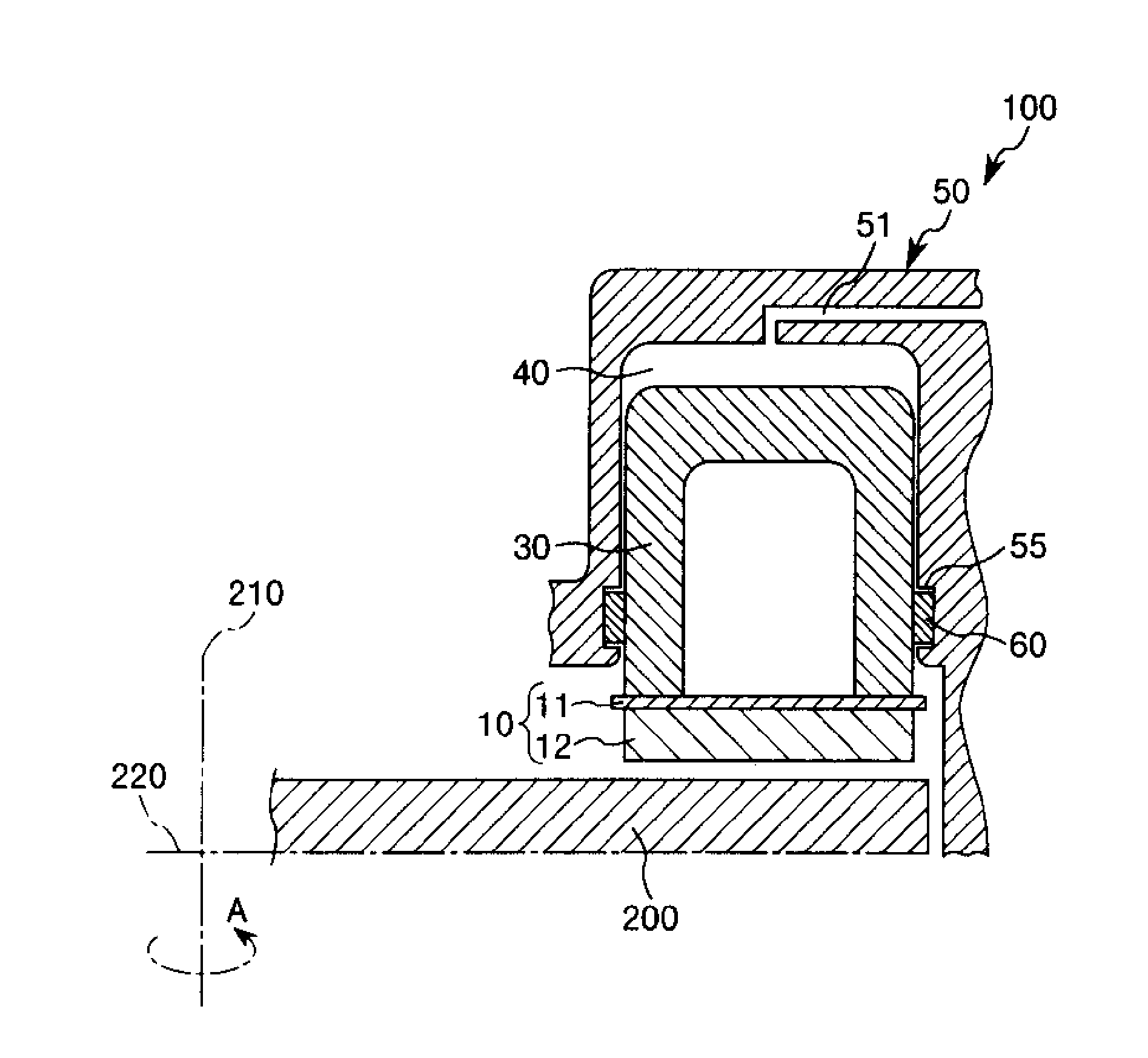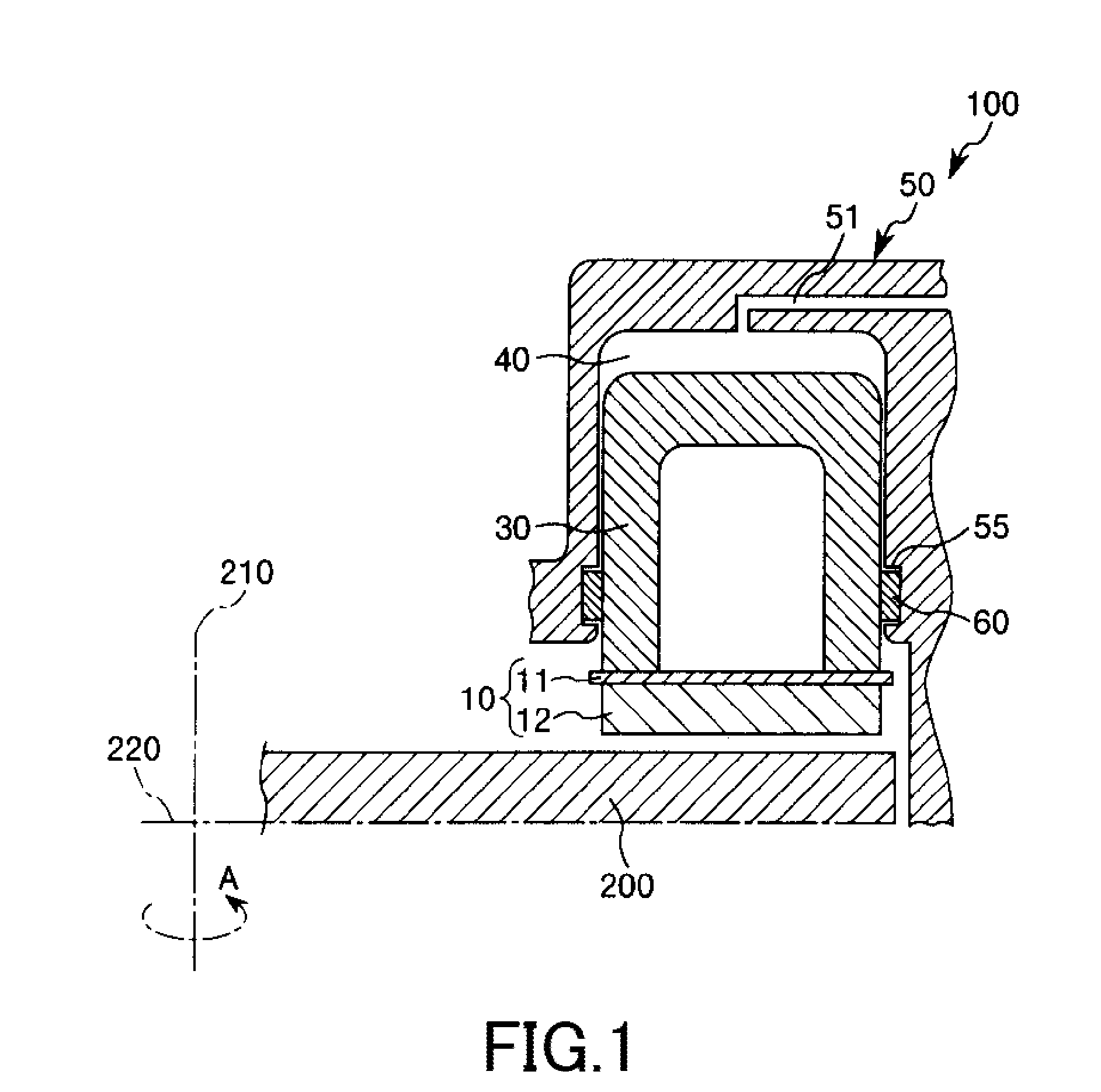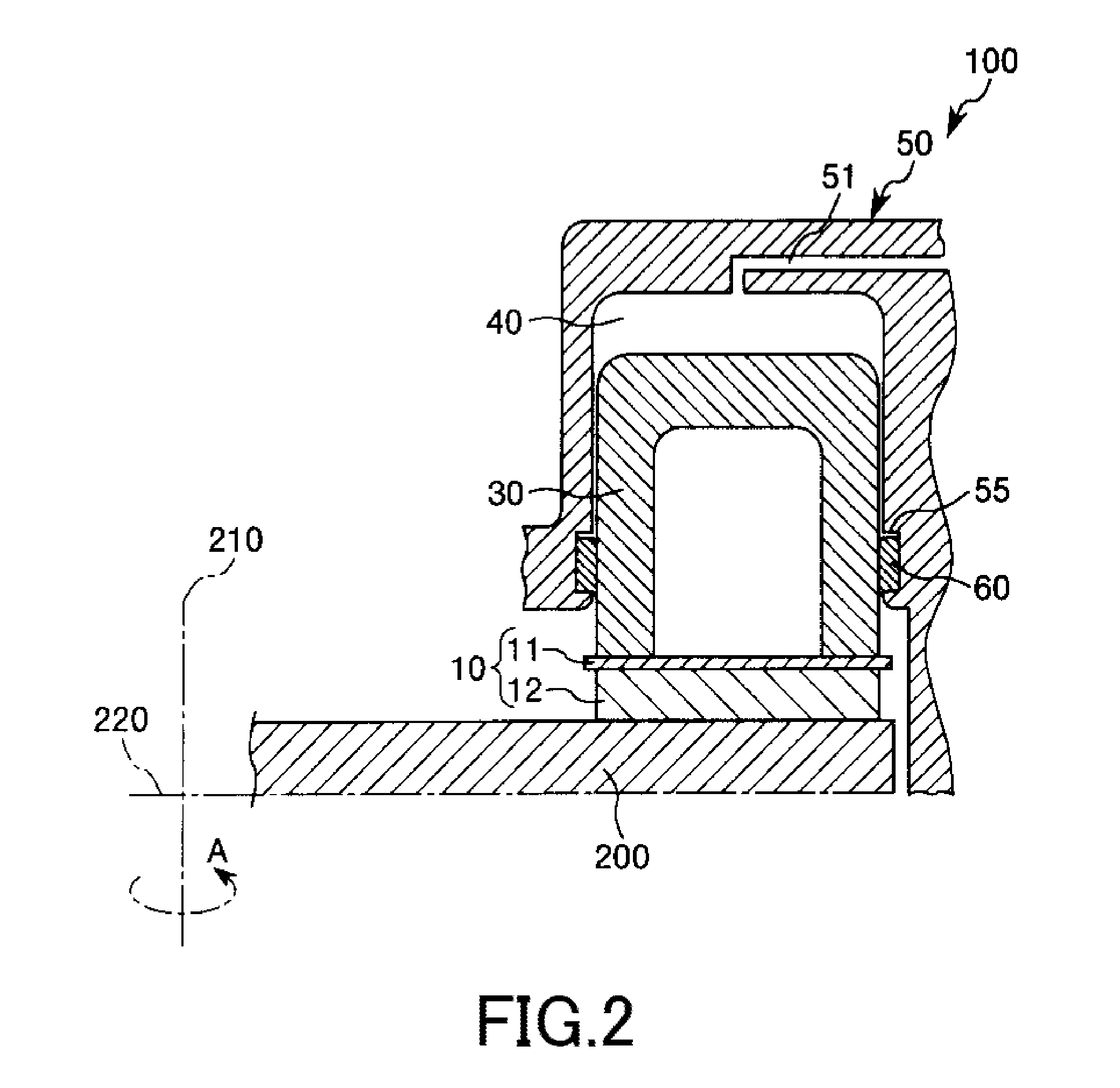Back-plate composition, back plate, brake pad, and caliper device
- Summary
- Abstract
- Description
- Claims
- Application Information
AI Technical Summary
Benefits of technology
Problems solved by technology
Method used
Image
Examples
example 1
[1] Preparation of Back-Plate Composition
[0156]A back-plate composition was prepared as follows.
[1-1] Preparation of First Fibers Coated with Resin Mixture
[0157]First, prepared was 55 mass % of a glass fiber (“Glass Fiber Roving 1084” produced by PPG Industries, Inc. and having an average diameter of 15 μm) subjected to a surface treatment with a silane coupling agent as a raw fiber (strand) for first fibers.
[0158]Next, 36.0 mass % of phenolic resin (“Sumilite Resin PR-51470” produced by Sumitomo Bakelite Co., Ltd. and having a weight average molecular weight of 2,800) as a resin, 6.0 mass % of hexamethylene tetramine as a curing agent, 1.0 mass % of magnesium oxide as a curing aid agent, 1.0 mass % of calcium stearate as a mold release agent, and 1.0 mass % of carbon black as a pigment were mixed with each other, to obtain a resin mixture.
[0159]Next, the glass fiber subjected to the surface treatment was coated with the obtained resin mixture by using fluidized-bed technology, the ...
examples 2 to 9
[0170]Back plates were manufactured in the same manner as Example 1 except that the constitution of the back-plate composition was changed as shown in Table 1, and constitutions of the first fibers and the second fibers were changed as shown in Table 2.
example 10
[0171]A back plate was manufactured in the same manner as Example 1 except that the constitution of the back-plate composition was changed as shown in Table 1, the preparation of the second fibers coated with the resin mixture was changed as follows, and the constitutions of the first fibers and the second fibers were changed as shown in Table 2.
[1-2] Preparation of Second Fibers Coated with Resin Mixture
[0172]First, prepared was 55 mass % of glass fibers (“CS-3E479S glass fibers” produced by Nitto Boseki Co., Ltd. and having an average length of 3 mm and an average diameter of 11 μm) each subjected to a surface treatment with a silane coupling agent as raw fibers (strands) for second fibers.
[0173]Next, 36.0 mass % of phenolic resin (“Sumilite Resin PR-51470” produced by Sumitomo Bakelite Co., Ltd. and having a weight average molecular weight of 2,800) as a resin, 6.0 mass % of hexamethylene tetramine as a curing agent, 1.0 mass % of magnesium oxide as a curing aid agent, 1.0 mass %...
PUM
 Login to View More
Login to View More Abstract
Description
Claims
Application Information
 Login to View More
Login to View More - R&D
- Intellectual Property
- Life Sciences
- Materials
- Tech Scout
- Unparalleled Data Quality
- Higher Quality Content
- 60% Fewer Hallucinations
Browse by: Latest US Patents, China's latest patents, Technical Efficacy Thesaurus, Application Domain, Technology Topic, Popular Technical Reports.
© 2025 PatSnap. All rights reserved.Legal|Privacy policy|Modern Slavery Act Transparency Statement|Sitemap|About US| Contact US: help@patsnap.com



